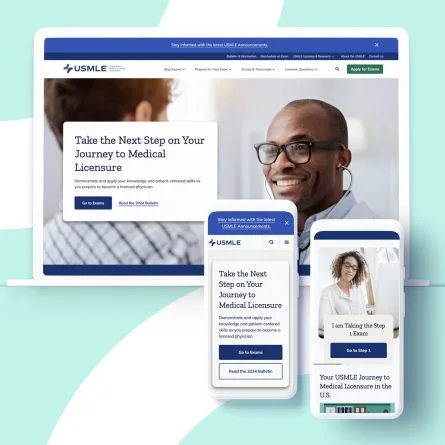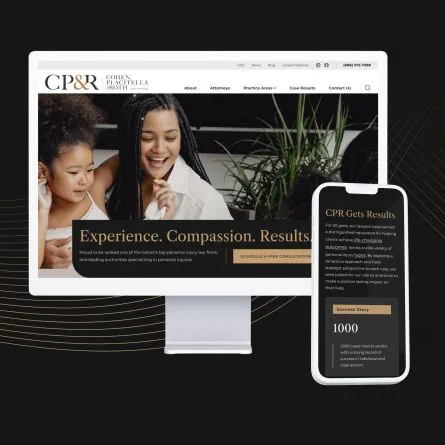Temple Health
Enterprise web design, consolidation & optimization for a world-renowned hospital system
OVERVIEW
Large organizations often share a website wish list: a framework that is adaptable enough to meet present and future needs of many departments, easy enough to navigate, and cohesive enough to tell a brand family story.
Temple Health — a robust academic health system serving Philadelphia and beyond — needed a new web framework to consolidate 27 individual departmental websites and better represent their wide range of services and providers spanning hospitals, community offices, urgent care and multi-specialty centers, and more. They also needed a new approach to navigation to guide viewers on a frictionless path through the site, from start to finish.
Pain Points & Challenges
Focus on the unique needs of users who regularly access and search the site via mobile devices.
Draw on our experience creating multisite frameworks to integrate all major clinical services and locations across the University hospital system, Fox Chase Cancer Center, and Lewis Katz School of Medicine within one master design framework.
Create content strategy and IA improvements that smartly serve multiple distinct audiences navigating nearly 5,000 migrated web pages.
Craft and build intuitive user journeys for patients to easily find providers, schedule and edit appointments, and navigate ancillary services like bill paying and insurance claims — all with an overarching commitment to HIPAA-compliant practices.
Seamlessly incorporate third-party integrations and multimedia features.
Results at a Glance
Solutions: Strategy Meets Creativity
User Experience
Keeping a streamlined experience in mind as the guiding principle of this project, we created new content funnels that begin with users self-selecting who they are: patient, visitor, physician, donor, or job seeker. From there, immediate customized calls to action lead them to relevant options for their next click on the site.
Information Architecture
We separated the massive amounts of content for each of the client’s primary hospitals into curated verticals using a tiered navigation solution. Once viewers arrive at a hospital landing page, the menu displays secondary navigation that contains only links within that hospital’s immediate ecosystem.
For example, patients interested in only Jeanes Hospital can see content strictly applicable to that entity. We kept the primary navigation accessible at the top of the page — eliminating frustrating “dead ends” and reducing overall bounce rates
A revised Find a Doctor search feature allows patients to:
Quickly make online appointment requests and access/submit key forms within a private, HIPAA-compliant infrastructure
Easily search medical team listing pages that are dynamically populated from an existing doctor database, grouped under relevant and easy-to-understand hierarchies
Access and use third-party patient-provider matching, scheduling, and doctor-rating systems
Explore a comprehensive Locations page to find detailed information on related hospital, primary care, and satellite offices
Patients, providers, and researchers alike can now use two separate Clinical Trials search tools within subsites for Temple Heart & Vascular Institute and the Temple Lung Center — refined by both keywords and conditional filters — to find trials related to their personal conditions and medical specialties.
Website Design
We evolved the existing brand guidelines to better apply to the web — and pushed them further with complementary brand colors and bolder graphic treatments where appropriate.
To meet the diverse content and layout needs of 27 centers with strong, consistent visual elements, we built an atomic design system that can be reused and reconfigured to work in many different ways over time — instead of a collection of one-off designs. By keeping these basic elements straightforward, they can be used in various combinations to meet practical content needs while providing a seamless user experience.
Content Strategy and Analytics
The nearly 5,000 pages of migrated content consist of news that is now reimagined via a newsroom-style format that allows users to browse related articles, blog entries, patient stories and portals, condition and treatment information, and more. Where content needed integrated web forms — such as Refer a Patient, Request an Appointment, and Contact Us — we added unique analytics codes to track referring pages.
The flexible framework and component library are living, breathing entities that can be adapted and expanded as needed to better serve all audiences as Temple Health expands in the years to come.


